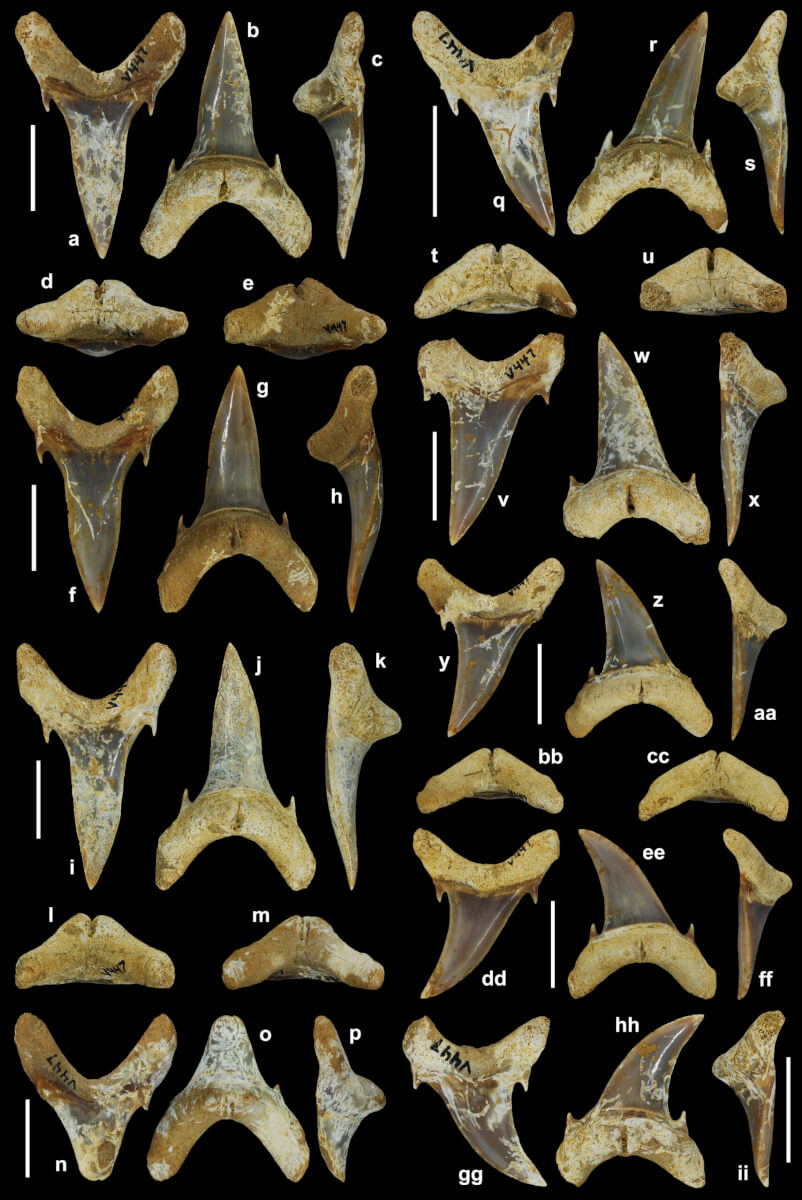BIRMINGHAM, Ala. — A 65-million-year-old fossil of a previously unknown species of shark has been found in Alabama. A team of researchers from Alabama and South Carolina made the groundbreaking finding, revealing a new chapter to the state’s rich paleontological history and also providing significant insights into marine life following the mass extinction of the dinosaurs.
The discovery team — led by Jun Ebersole, director of collections at McWane Science Center in Birmingham; David Cicimurri, curator of natural history at the South Carolina State Museum; and T. Lynn Harrell Jr., paleontologist and fossil collections curator at the Geological Survey of Alabama — stumbled upon this remarkable find quite by chance. The species, named Palaeohypotodus bizzocoi, thrived during the Paleocene epoch, approximately 65 million years ago. This was a period that followed the catastrophic event leading to the demise of over 75 percent of Earth’s life forms.

The name Palaeohypotodus translates to “ancient small-eared tooth,” a nod to the distinctive small needle-like fangs adorning the sides of the shark’s teeth. The new shark species was named after Dr. Bruce Bizzoco, who served as dean at Shelton State Community College and was a longtime volunteer at McWane Science Center.
Ebersole’s encounter with a mysterious box of shark teeth in the archives of the Geological Survey of Alabama, collected over a century ago, was the catalyst for this discovery.
“A few years ago, I was looking through the historical fossil collections at the Geological Survey in Alabama and came across a small box of shark teeth that were collected over 100 years ago in Wilcox County,” says Ebersole in a media release. “Having documented hundreds of fossil fish species over the last decade, I found it puzzling that these teeth were from a shark that I didn’t recognize.”
The southern half of Alabama, then submerged under a shallow, warm ocean, serves as a window into this transformative period in Earth’s history.
“This time period is understudied, which makes the discovery of this new shark species that much more significant,” notes Harrell. “Shark discoveries like this one give us tremendous insights into how ocean life recovers after major extinction events and also allows us to potentially forecast how global events, like climate change, affect marine life today.”

The team’s meticulous comparison of the fossilized teeth with those of modern sharks, such as great whites and makos, revealed unique dental arrangements, unlike any known living shark species.
“By studying the jaws and teeth of living sharks, it allowed us to reconstruct the dentition of this ancient species and showed that it had a tooth arrangement that differed from any living shark,” explains Cicimurri.
The discovery is part of a larger effort by Ebersole and Cicimurri to catalog Alabama’s fossil fishes. With over 400 unique species of fossil sharks and bony fishes already confirmed, their work underscores Alabama’s global significance as a hotspot for fossil fish diversity.

The Palaeohypotodus bizzocoi’s unveiling marks a crucial step forward in our understanding of life’s resilience and adaptability in the face of Earth’s most devastating events. Through the lens of this ancient predator, scientists can better grasp the complex dynamics of marine recovery and the enduring impact of extinction on the planet’s biodiversity.
The study is published in the journal Fossil Record.
